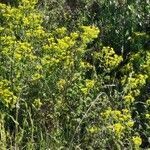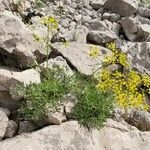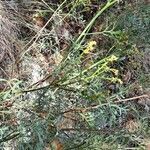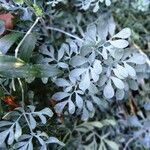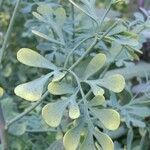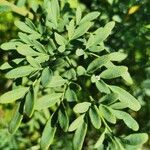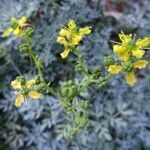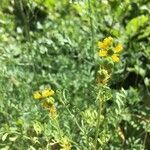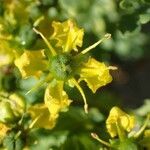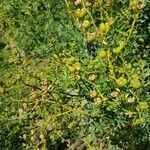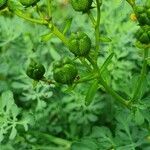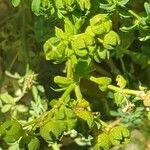| Therapeutic use
|
Amenorrhea (flower), Anticonvulsants (flower), Arthralgia (flower), Digestive system diseases (flower), Flatulence (flower), Hysteria (flower), Menstruation-inducing agents (flower), Nervous system diseases (flower), Skin diseases (flower), Vitiligo (flower), Anthelmintic (leaf), Gastrointestinal Aid (leaf), Abdominal pain (leaf), Amenorrhea (leaf), Anthelmintics (leaf), Anticonvulsants (leaf), Anti-inflammatory agents (leaf), Antirheumatic agents (leaf), Bronchitis (leaf), Colic (leaf), Contraceptive agents (leaf), Flatulence (leaf), Hemorrhage (leaf), Hysteria (leaf), Menorrhagia (leaf), Menstruation-inducing agents (leaf), Nervous system diseases (leaf), Pain (leaf), Pruritus (leaf), Sciatica (leaf), Skin diseases (leaf), Stomach diseases (leaf), Vitiligo (leaf), Anti-bacterial agents (root), Calcium channel blockers (root), Contraceptive agents (root), Amenorrhea (seed), Anticonvulsants (seed), Arthralgia (seed), Digestive system diseases (seed), Flatulence (seed), Hysteria (seed), Menstruation-inducing agents (seed), Nervous system diseases (seed), Skin diseases (seed), Vitiligo (seed), Contraceptive agents (stem), Orthopedic Aid (unspecified), Poultice (unspecified), Sedative (unspecified), Ear Medicine (unspecified), Abortifacient (unspecified), Ache(Ear) (unspecified), Headache (unspecified), Amenorrhea (unspecified), Anaphrodisiac (unspecified), Antidote (unspecified), Apertif (unspecified), Arthritis (unspecified), Bactericide (unspecified), Bite(Bug) (unspecified), Bite(Snake) (unspecified), Cancer (unspecified), Carminative (unspecified), Cold (unspecified), Convulsion (unspecified), Cough (unspecified), Detersive (unspecified), Digestive (unspecified), Diuretic (unspecified), Earache (unspecified), Emmenagogue (unspecified), Epilepsy (unspecified), Excrescence (unspecified), Fertility (unspecified), Fever (unspecified), Hematuria (unspecified), Hemostat (unspecified), Hysteria (unspecified), Insecticide (unspecified), Malaria (unspecified), Medicine (unspecified), Narcotic (unspecified), Nervine (unspecified), Neuralgia (unspecified), Puerperium (unspecified), Resolvent (unspecified), Revulsive (unspecified), Rheumatism (unspecified), Spasm (unspecified), Spice (unspecified), Stimulant (unspecified), Toothache (unspecified), Uterotonic (unspecified), Vermifuge (unspecified), Antifertility (unspecified), Poison (unspecified), Acaricide (unspecified), Colic (unspecified), Dyspepsia (unspecified), Spermicide (unspecified), Whitlow (unspecified), Itch (unspecified), Abortifacient agents (unspecified), Anthelmintics (unspecified), Anti-infective agents, local (unspecified), Antirheumatic agents (unspecified), Counterirritant (unspecified), Menstruation-inducing agents (unspecified), Narcotics (unspecified), Parasympatholytics (unspecified), Anti-poisoning (unspecified), General tonic for rejuvenation (unspecified), Irritant (unspecified), Abortifacient agents (whole plant), Appetite stimulants (whole plant), Bronchitis (whole plant), Colic (whole plant), Cough (whole plant), Dizziness (whole plant), Flatulence (whole plant), Heart diseases (whole plant), Hysteria (whole plant), Menstruation-inducing agents (whole plant), Nervous system diseases (whole plant), Parasympatholytics (whole plant), Post-traumatic headache (whole plant), Respiratory tract infections (whole plant)
|
